  |
|
  |
  |
|
  |
Before and during World War II, Mr. Manuel Kann (W3ZK) of Baltimore assisted George Sterling with the manufacture of aperiodic receivers and parts for the Adcock direction finders, running a manufacturing business out of the basement of his home in Baltimore. After the war, Manuel Kann and Charles Ellert opened an electronics store in Baltimore named Kann-Ellert located on TV hill in Baltimore City. (Note: I shopped in their store for radio equipment in 1967-69. I purchased my novice crystals and first callbook there.)
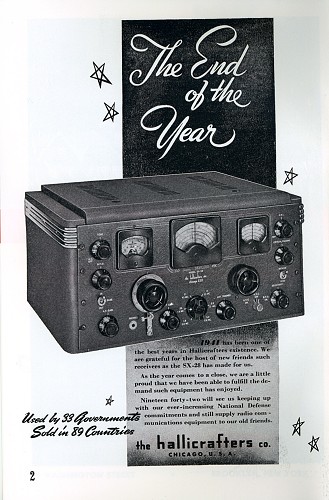 |
|
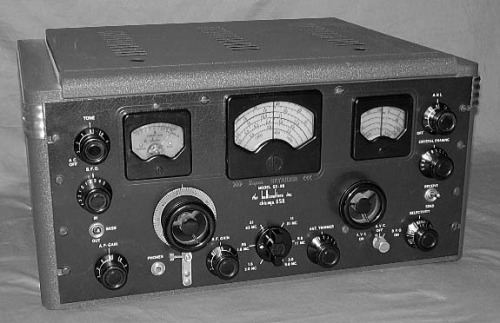 |
|
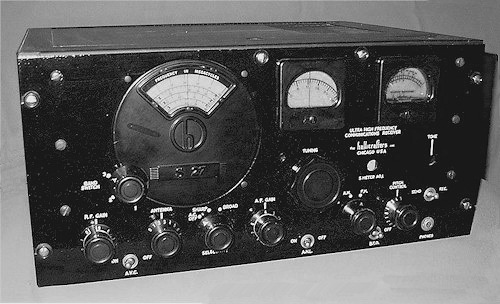 |
| Hallicrafters SX-28 advertisement in January 1942 issue of QST. | Hallicrafters SX-28 was the workhorse receiver used by the FCC/RID monitoring stations and mobile units. | Hallicrafters S-27 receivers were also used by the FCC/RID monitoring stations and mobile units. |
During the war, RID received support from manufactures of receivers and other equipment. The Hallicrafters organization supplied RID with receivers. The Hudson Motor Company modified their passenger car so it could be used as RID mobile units outfitted with receiving and recording equipment and low profile loop direction finders for undercover work.
After the bombing of Pearl Harbor on December 7, 1941, all amateur operations were shut down and marshall law was imposed in Hawaii. The FCC was called upon by the military to support radio intelligence efforts. It was the belief of high ranking military officals that if the Japanese had not utilized clandestine transmitters for espionage purposes before the attack (there was no evidence they had), after the attack, with commercial outlets of communication closed to them, this would be the time for them to resort to espionage activity. At the request of the Director of Naval Communications, the FCC mobilized a group of volunteers from both the primary and secondary monitoring stations to go to the Hawaiian Islands on a two year detail to set up eight new monitoring stations, one each on Oahu, Molokai, Kauai, Maui and Lanai and three on the main island of Hawaii. George Sterling (W3DF) accompanied Prose Walker (W2BMX), Charlie Ellert (W3LO), Walt Maxwell (W8KHK) and other RID personnel who boarded a navy ship in San Francisco loaded with equipment and sailed to Hawaii with a Navy convoy to begin the process of setting up a network of monitoring stations on the western front.
 |
|
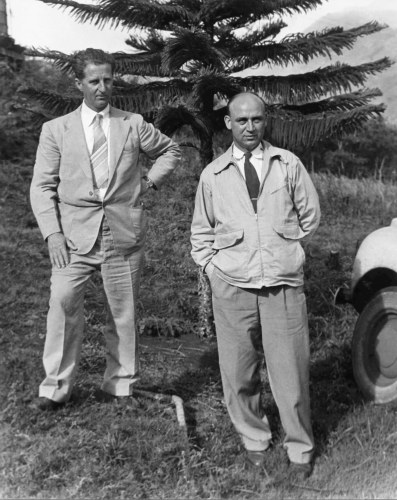 |
|
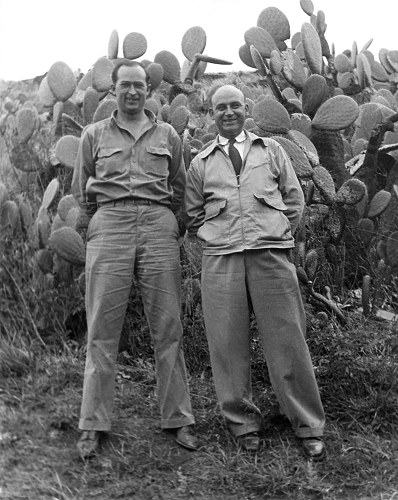 |
| George Sterling at the primary monitoring station in the Punchbowl Crater, Honolulu, an extended volcano. The photo was taken by Prose Walker - W2BMX in March 1942. Prose came to work for the FCC in 1940 and began his life long friendship with George. | George
Sterling
(W3DF) and Charlie Ellert (W3LO), Honolulu primary monitoring station,
March 1942. The monitoring station was located in the Punch
Bowl.
It is now a national cemetery for the victims of Pearl
Harbor. |
Prose Walker (W2BMX) and Charlie Ellert (W3LO), Honolulu primary monitoring station, March 1942. Hawaii was not a state at that time and martial law was imposed for about a year after the bombing of Pearl Harbor. |
Once the Hawaiian monitoring stations were in operation, RID conducted 24/7 mobile monitoring around the shoreline of all the islands with the intention of finding clandestine radio operation between local Japanese loyal to Japan and Japanese submarines cruising offshore. No clandestine operations were ever found and there were no Hawaiians of Japanese descent ever found to be disloyal to the U.S.
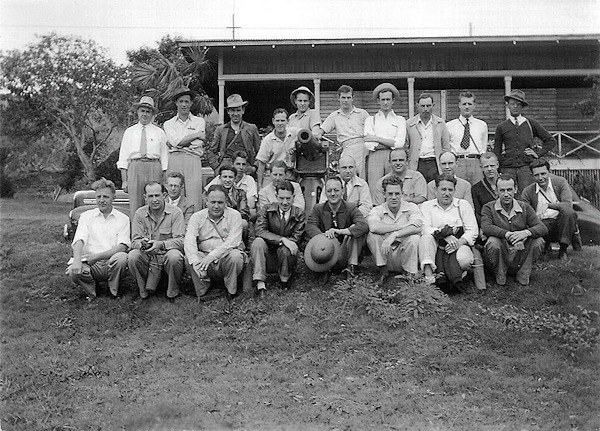 |
|
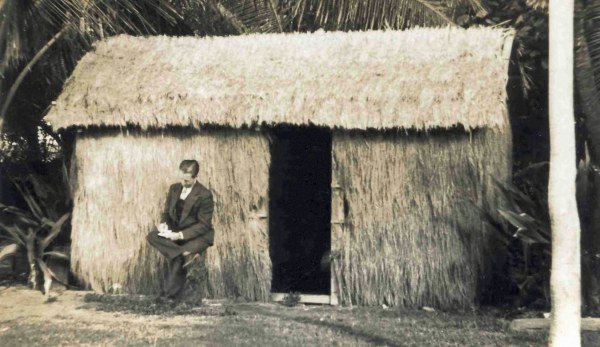 |
| RID team in Hawaii February 1942. | George Sterling working at the little grass shack in Kealakekua, Hawaii. The little grass shack was the title of a pre-WW2 song. There was no such shack, but when visitors came to Kealakekua they were disappointed to find there was no shack, so the natives built one. |
Prose Walker was appointed supervisor of the Radio Security Center in Honolulu with responsibility for the communications security of the territory. With more and more military aircraft flying in the pacific during World War II, there was a growing problem with aircraft losing their way due to faulty navigation, bad weather or limited fuel supply. Prose Walker was responsible for solving the lost aircraft problem. He solved the problem by utilizing the FCC monitoring station Adcock direction finders to obtain bearings and fixes on the lost aircraft to correct their course so they could safely land. Once his solution was implemented, no more aircraft were lost while flying between the mainland and the Hawaiian Islands. The RID continued to provide emergency DF fixes on planes until Army Air Force personnel were trained to take over the job. In 1943, 273 aircraft were saved by the FCC Adcock direction finders and more than 600 were saved during the duration of the war.
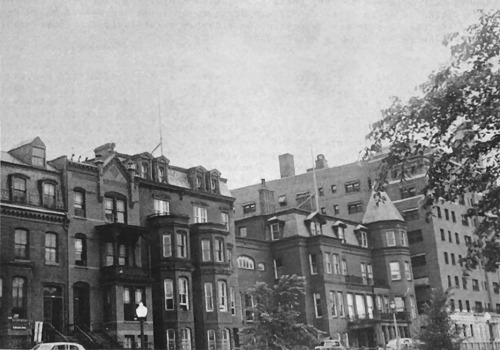 |
|
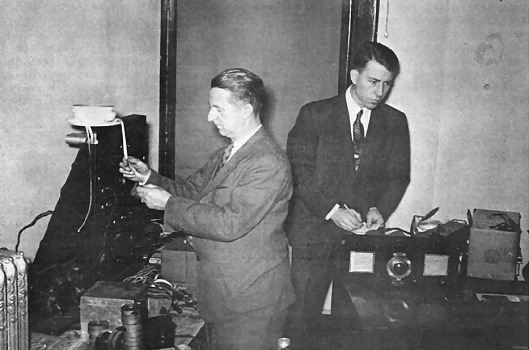 |
||
| The German Embassy and Chancellory, Washington, DC. Note the antenna poles on each building with lead-ins coming off of each end. | June 1945: George Sterling and his assistant Al McIntosh inspecting Nazi spy equipment located in the German Embassy in Washington, DC. |
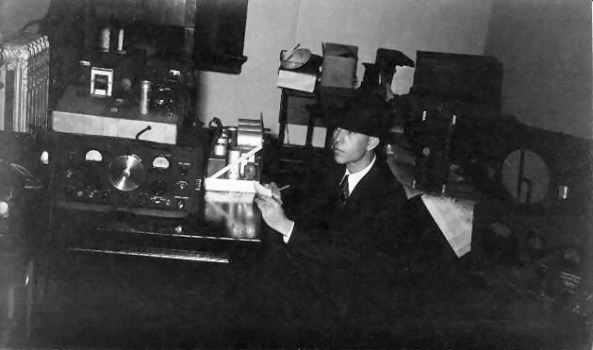 |
|
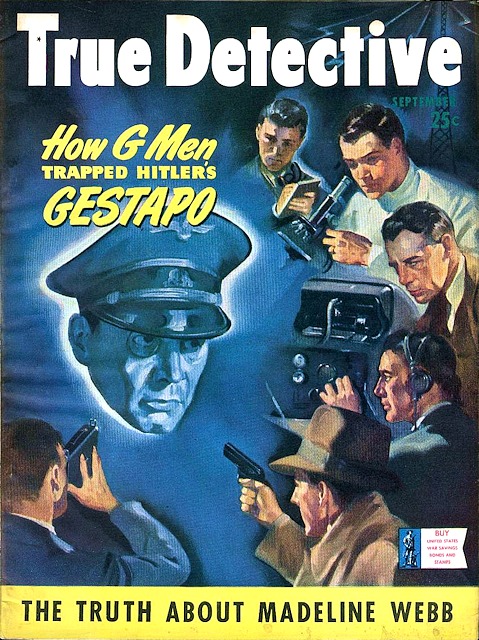 |
|
| June 1945: Al McIntosh inspecting Nazi spy equipment found in the German Embassy in Washington DC. The transmitter was heard and located by RID's monitoring network months earlier but was not seized due to concerns with U.S. diplomatic interests in Europe during WW2. | The September 1945 issue of True Detective magazine contained the first part of a three part story about RID that was based on the German Embassy case. |
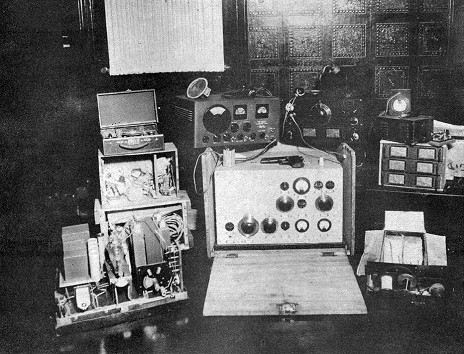 |
|
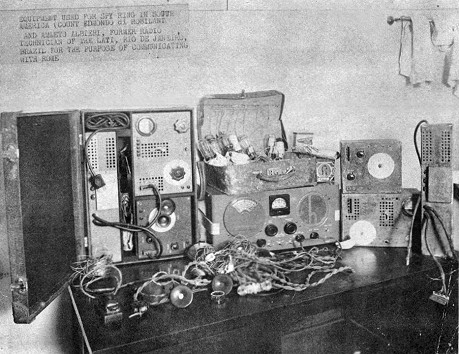 |
| Nazi spy
equipment
located by RID in Rio de Janerio South America on July 20,
1942.
A homebrew transmitter, Hallicrafters receiver and various other radio
items. Notice the fire arm sitting on top of the transmitter
(center). RID agents were not protected by the Geneva
Convention
if they were captured. |
The usual Nazi stock and trade - suitcase transmitter and Hallicrafters receiver. RID used Hallicrafters equipment to locate spies who also used Hallicrafters equipment purchased and sold to legitimate sources in South America. |
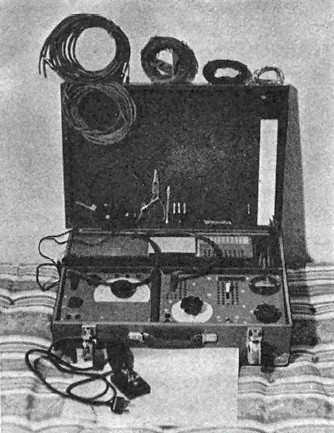 |
|
 |
| Nazi spy radio equipment carried in a suitcase. | The primary tool of the Nazi spy. This case was preseneted to George Sterling as a momento in recognition of his achievements as Chief of RID. |
Two days after Pearl Harbor, RID identified and located a clandestine radio transmitter in the German Embassy in Washington, DC before it was able to communicate with its homeland. In the early morning hours of December 9, 1941, a RID watchdog receiver was triggered in a mobile unit cruising the streets of Washington, DC. At the same time, the primary monitoring station in Portland, Oregon heard the same station (UA) calling his control center. Five other monitoring stations were assigned to watch the frequency. A few hours later the station was heard again and bearings were taken an reported. When the bearings were plotted, the fix confirmed that the transmitter was in Washington, DC. Three mobile units were dispatched and bearings taken, narrowing the location to the German Embassy. The precise location of the transmitter could not be determined without entering the Embassy because the antenna was stretched between two buildings with equal signal strength at each end where lead-in wires went into each building. After a pre-dawn conference with the FBI, and with the cooperation of the Potomac Electric Power Company, switches were installed in the power feeds to each building to interrupt the power during the next transmission. In the end, the State Department's concern with the diplomatic mission still in Germany resulted in the decision to not seize the transmitter. Two jammers were set up to drown out the station if he transmitted again. He never did, but a short time later the building was taken over by the U.S. government and the evidence was found. Click here to view a newspaper article that appeared in the New York Times on May 12, 1944 detailing testimony given by George Sterling at a Congressional hearing in Washington, D.C. relating the accomplishments of the RID in controlling clandestine radio activity in the U.S. during World War II.
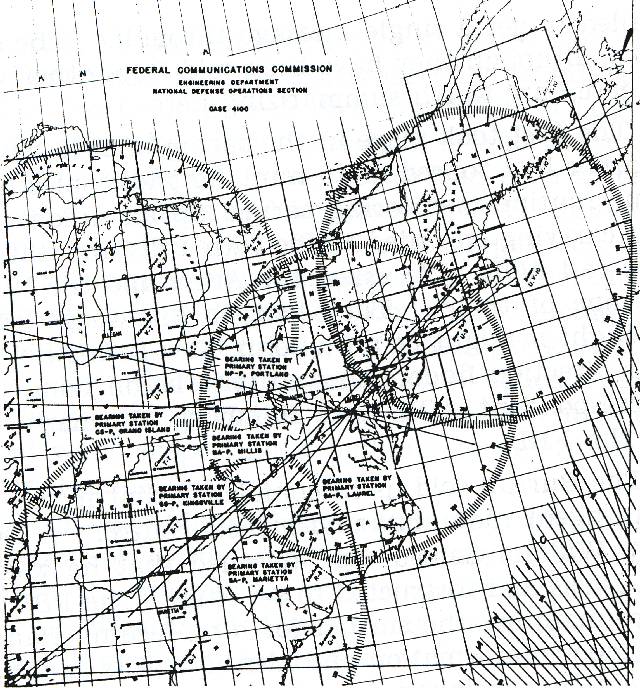 |
|
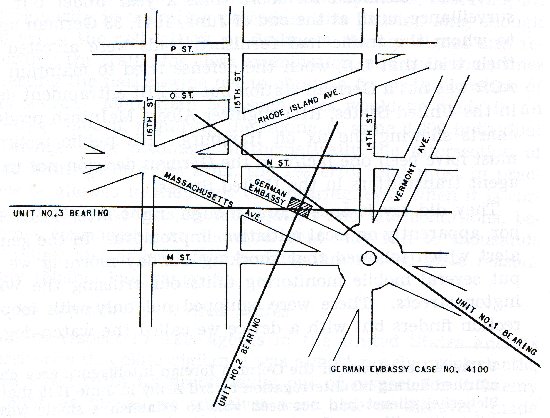 |
|
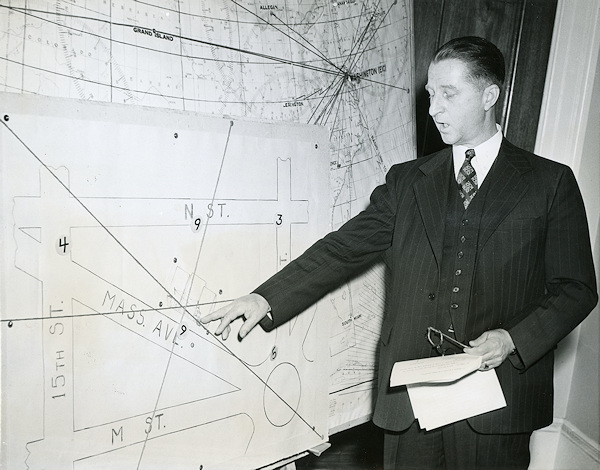 |
| Plot of
bearings
taken by RID primary monitoring stations to determine the location of a
clandestine transmitter in Washington, DC area on December 9,
1941. The first alert was sounded by an aperiodic receiver in
a
mobile unit cruising DC that was immediately followed by an alert from
the primary monitoring station in Portland, Oregon. |
Plot of
bearings
taken by RID mobile units dispatched to Washington, DC to determine the
location of the clandestine transmitter. The location was
narrowed down to the German Embassy but the transmitter was not seized
due to FBI concerns with the diplomatic mission in Germany. |
George
Sterling briefing Congressional representatives on the events leading
up to the discovery of a clandestine radio station attempting to
contact the homeland from the German Embassy in Washington, DC during
the early morning hours of December 9, 1941. |
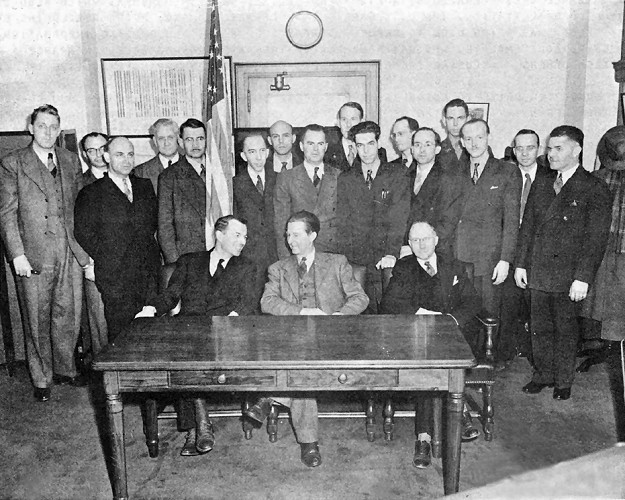 |
|
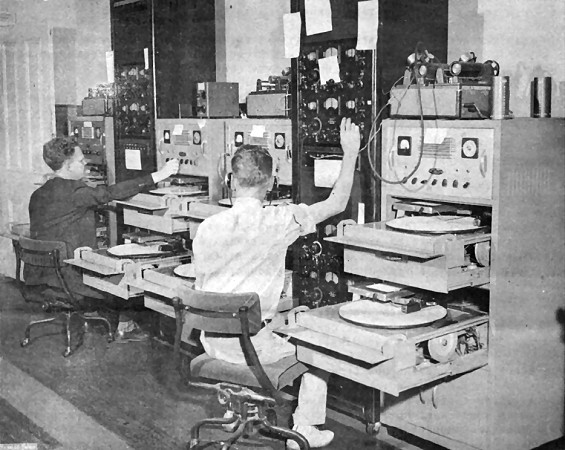 |
| RID agents prior to leaving for South America to clean out the Nazi spy network there. George Sterling (center front row) with government officials from the State Department and FBI . | RID operators recording enemy propaganda for the FCC Foreign Broadcasting Intelligence Service. Recorded material was translated and analyzed for the U.S. military and intelligence agencies. |
For a year and a quarter after Pearl Harbor, the Radio Intelligence Division carried the full load of military radio intelligence in Alaska, where the Army was not able to station a radio intelligence company until late 1942. With RID support, a fully operational monitoring station was established in Alaska in the spring of 1943. The RID radio-patrolled the Alaskan coast by sea. In San Francisco an Intelligence Center was set up where officers of the military services were on duty around the clock. RID identified and tracked radio equipped fire bomb balloons the Japanese launched against the west coast. It discovered the location of a Nazi weather station on Greenland which the Coast Guard destroyed. It trained military personnel who eventually took over most of the military duties assigned to the RID. It prepared instructional booklets and monitoring aids and supervised military radio intelligence activities until the military was able to operate without assistance. RID monitored foreign radio broadcasts, setting up the organization which later became the Foreign Broadcast Information Service.
During the war effort tensions between the military and RID had been building and in mid 1943 they came to a head. The Navy in Washington DC thought that RID was trying to take over their turf. There was a feud brewing between Naval officers in Washington and FCC Chairman James L. Fly because of resentment over a civilian being named to head the Board of War Communications and because Chairman Fly had refused to transfer finger prints of commercial radio operators in the merchant marine to the FBI file. The icing on the cake was a report that a Naval Security Facility had erroneously projected some RID bearings with some taken with their own stations which had led the Navy on a wild goose chase, and in one case, into a battle with the Japanese fleet in Alaskan waters, allegedly lost by the U.S. Navy (no proof was ever provided). The Joint Chiefs of Staff sent a secret letter to the President requesting that RID be transferred to the Army. President Roosevelt disapproved the request and the storm clouds burst on July 2, 1943 when the House Select Committee appointed by Congress met in a formal session to begin an investigation of the FCC.
Hearings before the House Select Committee insued in early 1944. Chairman Fly, Commissioner T.A.M. Craven, Chief Engineer Ewell K. Jett, Charles Ellert, Al McIntosh, and George Sterling each testified before the committee in Washington. Prior to their testimony, the operation of RID was cloaked in secrecy, operating as a separate entity with the other branches of the FCC unaware of the details of its operation. After public testimony was given, the lid was blown off which resulted in RID receiving much publicity in the press, on the radio, in newspapers and magazines, and in Hollywood.
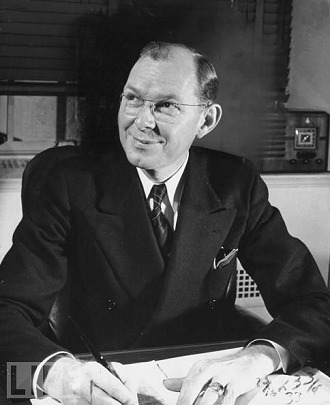 |
|
 |
|
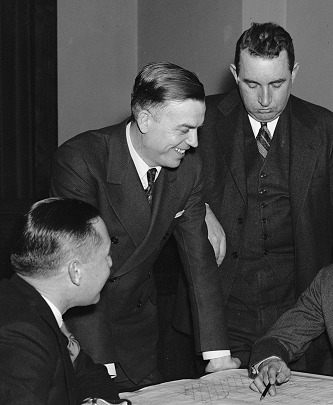 |
| James L.
Fly - FCC Chairman (1939-1944) |
T.A.M.
Craven - FCC Commissioner 1944 |
Ewell K.
Jett (center) - FCC Chief Engineer 1944 |
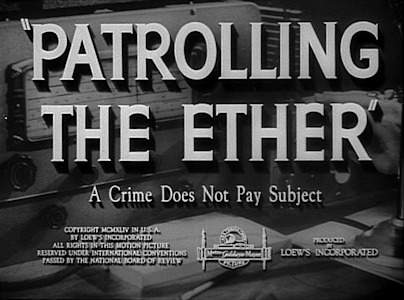 |
|
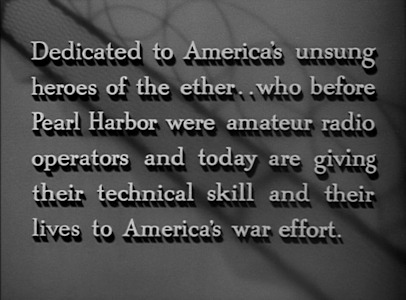 |
|
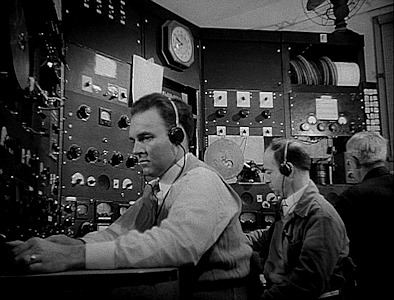 |
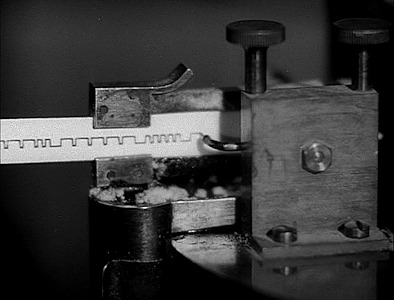 |
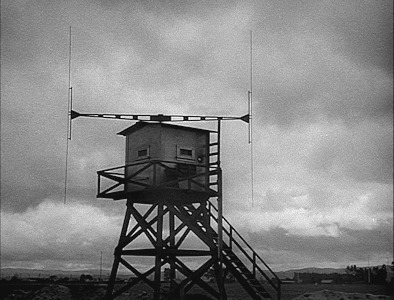 |
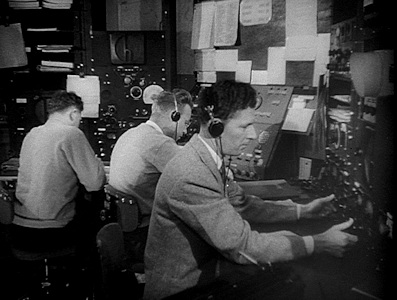 |
||
| Images from the film "Patrolling the Ether" 1944 | ||||
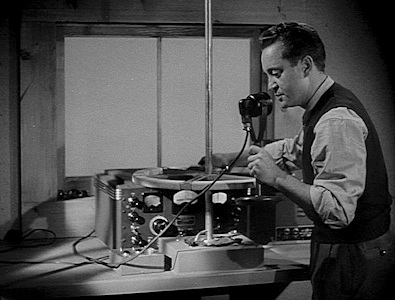 |
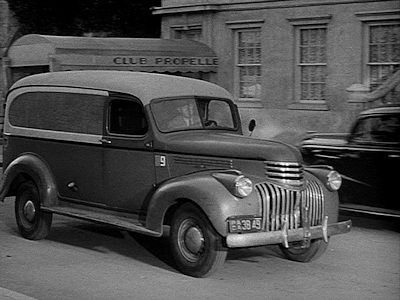 |
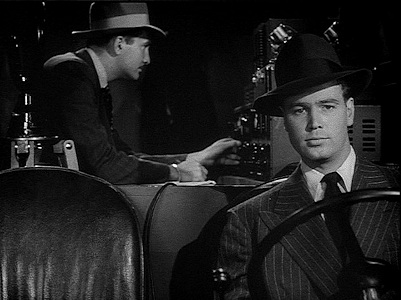 |
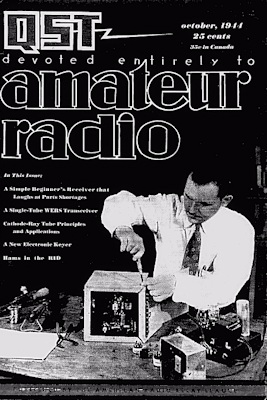 |
||||||
| "Hams in the RID" appeared in the October 1944 issue of QST. |
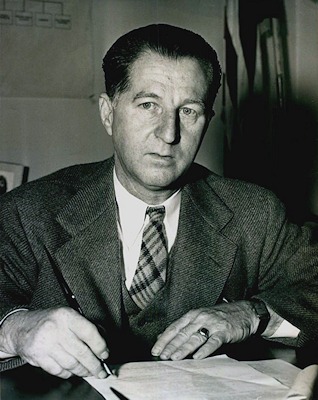 |
|
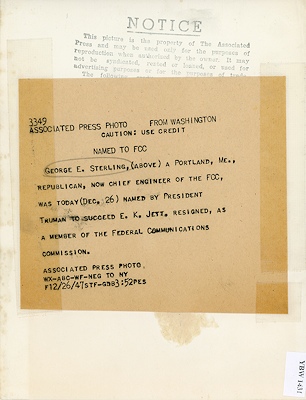 |
|
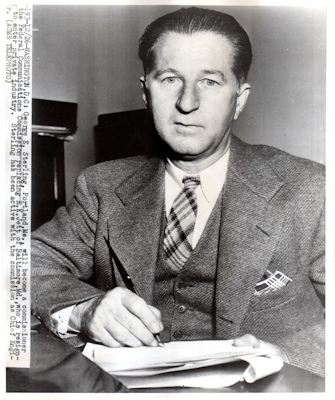 |
|
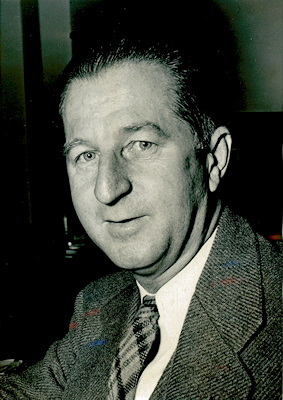 |
|
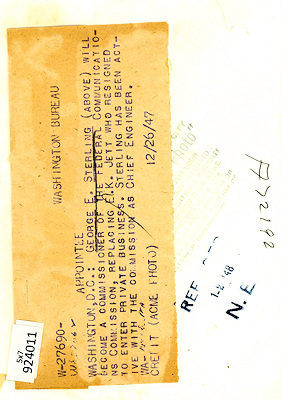 |
| 1947 Commission press photo of FCC Chief Engineer George Sterling | Back side of 1947 Commission press photo. | 1948
Commission press photo of FCC Commissioner George Sterling. |
1947
press photo of FCC Commissioner Sterling December 26, 1947 |
Back side
of December 1947 Commission press photo |
In 1946 George Sterling served as a delegate of the Provisional International Civil Aviation Organization at the Demonstration of Radio Aids to the Air Navigation conference held in London, England. In November 1946 he served as chairman of the United States delegation to the engineering conference looking toward the third NARBA meeting which convened in Havana, Cuba. The North American Radio Broadcasting Agreement (NARBA) was a treaty enacted in 1941 between the U.S, Canada, Mexico, Cuba, Dominican Republic, and Haiti to regulate the allocation of frequencies to AM broadcast stations in these countries. In April 1947 George Sterling was promoted to the position of FCC Chief Engineer. During his tenure as Chief Engineer he established a special branch of the FCC to handle amateur radio affairs.
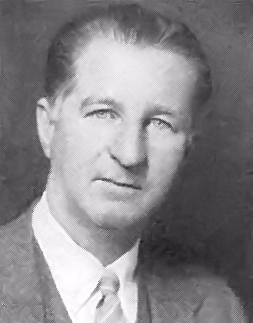 |
|
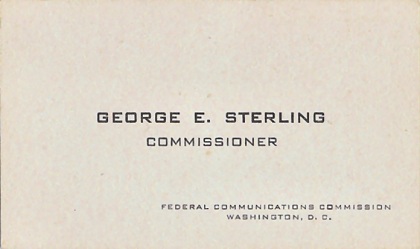 |
|
|
| Commissioner Sterling (1948) | George Sterling's business card |
Click
here to view some personal memos Geroge Sterling
sent to Al McIntosh.
In January 1948 President Harry Truman appointed
George
Sterling as Commissioner of the Federal Communications Commission to
replace Commissioner Ewell K. Jett who resigned on December 31, 1947 to
become
vice president and director of the radio division of the Baltimore Sun
newspaper. Click here
to view the biography the FCC published when he was appointed
Commissioner. The following year, George was nominated by
President
Truman and confirmed by the Senate to serve a full seven year term as
Commissioner. Click here
to view the
announcement that appeared in QST. George served as FCC
Commissioner from January 2, 1948 to September 30, 1954.
During the late 1940s, the United States was experiencing explosive growth in the television industry. In 1948 a black and white 19 inch RCA console television cost about one thousand dollars. This was a large investment for the average working person yet television gradually swept the country from coast to coast and changed American social habits in many ways. One social habit that was forever changed by television was the family dinner hour. People didn't want to miss their favorite TV programs while they ate dinner so the "TV tray" was born and meals were eaten around the TV set. George Sterling was the first person to introduce and demonstrate the operation of a television receiver to the residents of Peaks Island.
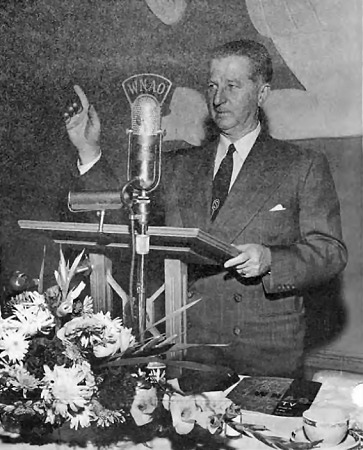 |
|
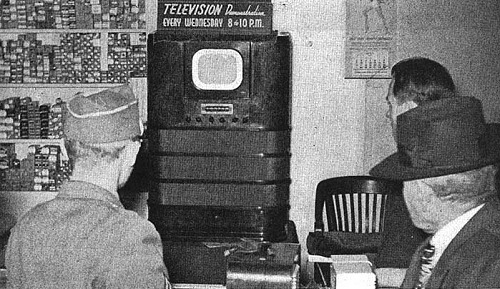 |
||
| George addressing a TV broadcast conference (circa 1950s) | Television in the 1940s |
While George was FCC Commissioner, he maintained two residences, one in Silver Spring, Maryland and one at his family home on Peak's Island. Vacations were spent on Peaks Island where George enjoyed his ham station, lobster trapping and the company of his family and neighbors. In 1950, he maintained his primary ham station back in Silver Spring, Maryland which consisted of two stations, one on the second floor of his home and the other in the basement. The main station was on the second floor. It consisted of a 600 watt DC input rig consisting of a homebrew pair of 813 finals driven by an 807 and a Hallicrafters HT-18 VFO. The rig was modulated with a pair of 838s. Receiving was done with a pair of Hallicrafter receivers, an SX-42 and the more recent model SX-71. The shack walls were covered with certificates, diplomas, pictures, QSLs and momentos from his 42 years in radio. George's morse key was the straight key he had since his merchant marine operator days. The shack contained a professional grade tape recorder, an FM receiver connected to a high fidelity speaker, and a ten inch TV set which was being outfitted with a homebrew adapter for color TV using the CBS rotating disk system. The basement contained a workshop and the second shack with a 400 watt DC input 40 meter rig consisting of a surplus BC-459 transmitter driving an HK-354E final amplifier. Receiving was done with the Hallicrafters workhorse, the SX-28.
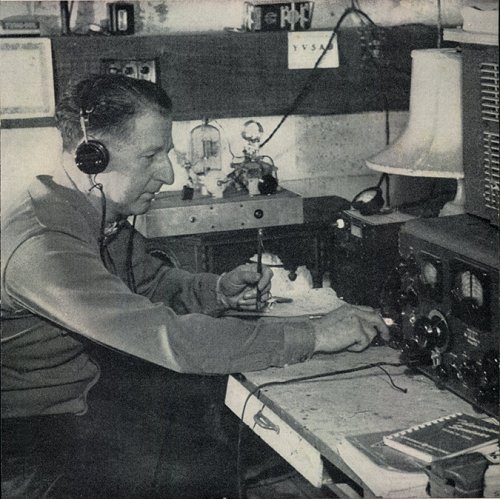 |
|
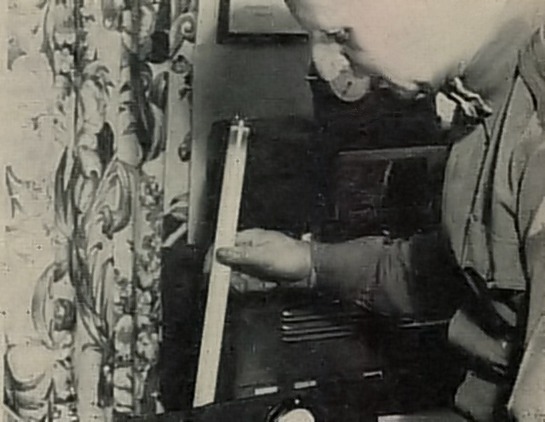 | |
 |
| W1AE circa 1950 in his basement shack on his 40 meter rig. Notice that he is sending with his right hand and has a pencil in his left hand. This technique was used by most commerical operators of his era. | W1AE circa 1950 checking the neutralization of his final amplifier. | FCC Commisioner George Sterling at his home station in Silver Spring, Maryland. Photo was taken on May 4, 1950. |
George retired from the FCC on September 30, 1954. A write-up announcing his retirement and highlighting his career appeared in the "It Seems to Us" column of the November 1954 issue of QST. Click here to view the article.
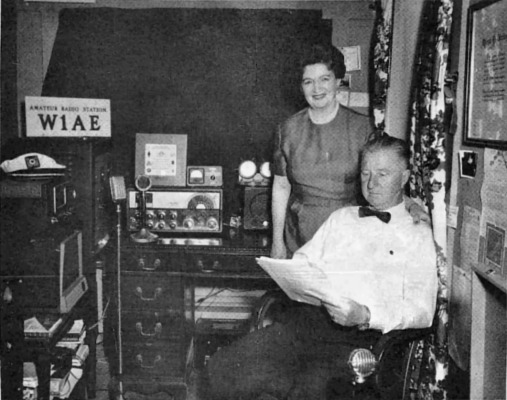 |
|

|
| George and Margaret at their Peaks Island home circa 1963 | George enjoyed fishing during his retirement years, 1968 photo |
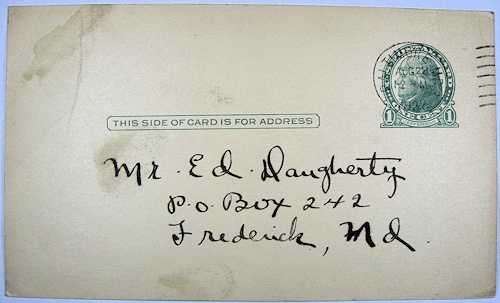 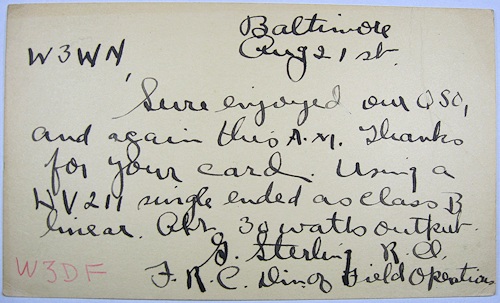 |
|
| One of George's QSLs from 1932. Image courtesy of the NL7XM Collection, 2014. | |
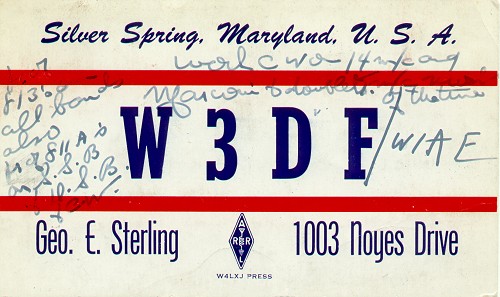 |
|
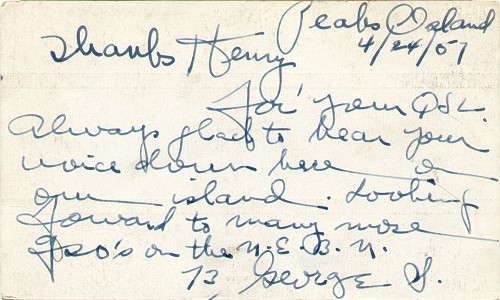 |
| George's QSL card for a QSO made in April 1957 |
After his retirement, George returned to his home in Peaks Island, Maine. His home was located in Evergreen Landing located on the northern tip of the island. There he spent time with his family, enjoyed fishing, lobster fishing, amateur radio, and writing articles that appeared in various publications describing his many experiences during World War I, with the RID during World War II, and his career with the Commerce Department, Federal Radio Commission, and FCC.
In 1948 George was elected a fellow of the Institute of Radio Engineers (IRE). He was active in the Quarter Century Wireless Association (QCWA), the Yankee Chapter #112 and Pine Tree Chapter #134, the First Class Operators Club (FOC), and the Old Old Timers Club (OOTC #51). He was president of OOTC while he was serving as FCC Commissioner. He was a pioneer member of the Antique Wireless Association (AWA) and an Honorary Life Member of the Radio Club of America. George received the DeForest Audion Gold Medal Award from the Veteran Wireless Operators Association in 1979. This award recognizes significant contributions to the world of technology.
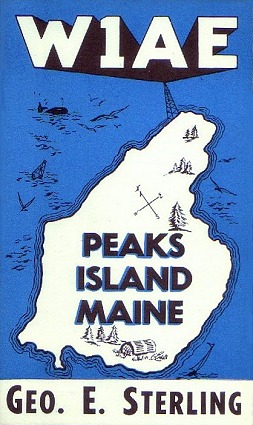 |
|
 |
| George's QSL from 1965 | George spent winter in Sarasota, Florida and spring and summers on Peaks Island in the 1960s. |
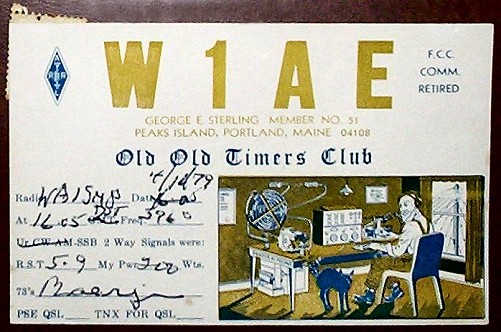 |
|
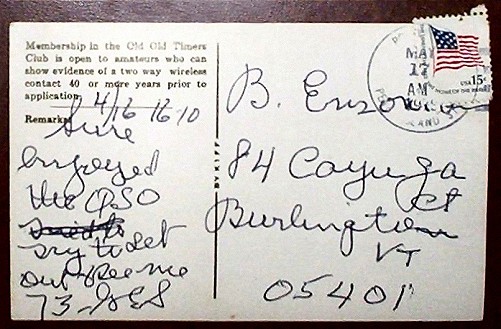 |
| George's QSL from a QSO in April 1979. George was still living on Peaks Island and kept schedules with his old friends on 80 and 20 meters. |
During the 1960s George resided in Sarasota, Florida during the winter months and was a member of the Sarasota Amateur Radio Association. During the summer months he resided at his home on Peaks Island. During trips between Maine and Florida we visited his children in Baltimore. In 1985, George was elected to the QCWA Hall of Fame.
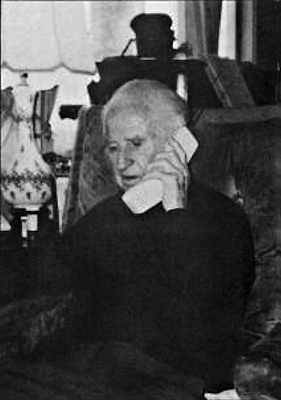 |
 |
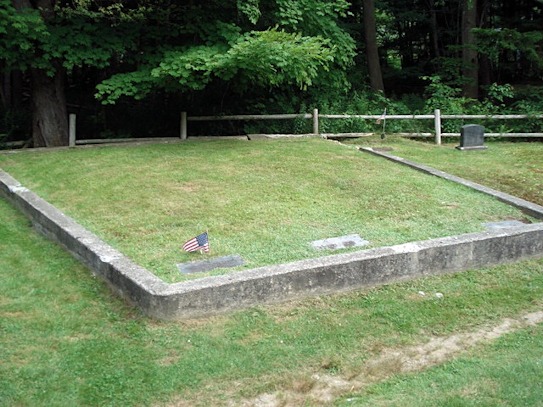 |
||
| George
Sterling circa late 1980s. He passed away at age 96. |
George Sterling's gravestone, Pond Grove Cemetery, Peaks Island, Maine. | Sterling cemetery plot, Pond Grove Cemetery, Peaks Island, Maine. Margaret is buried next to George. |
Toward the end of his life he resided
in a
retirement home in Portland, Maine and took mini vacations with his
family away from the retirement home from time to time.
George
passed away
in Portland, Maine on November 14, 1990 at the age of 96. He
was buried in Pond Grove Cemetery on Peaks Island. His
wife, Margaret, passed away in Baltimore, Maryland on November 16, 1998
at the age of 98.
 |
|
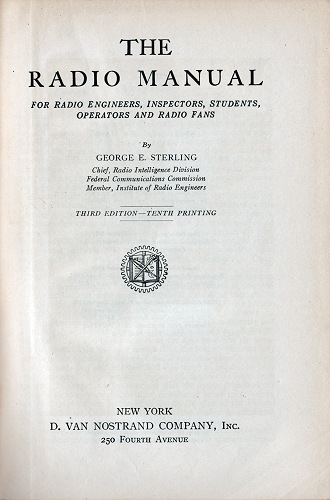 |
|
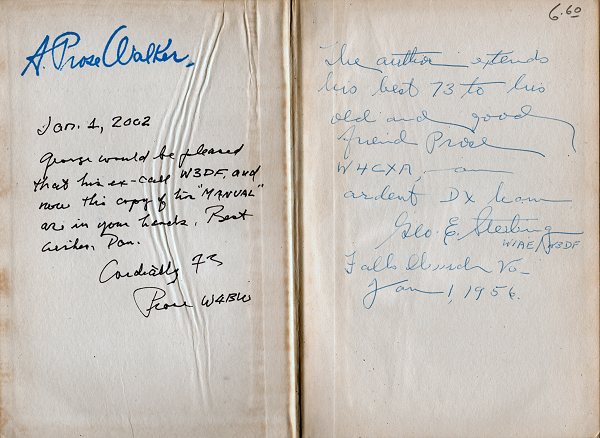
|
| The Radio Manual |
|
Autographed copy of The Radio Manual signed by George Sterling and Prose Walker |
In addition to his distinguished career, George Sterling was a well known author. During the early years of his federal career he authored "The Radio Manual,” a reference book which covered all aspects of radio communication, equipment and procedures in the early days of radio. His book became the recognized standard textbook of the radio industry and reference book for colleges and universities. The first edition was published in 1928 and was re-printed several times through the fourth edition published in 1950. Many of the chapters were written and edited by George's colleagues who were recognized experts in their field. "There is a lot of radio history in this book, most of which cannot be found anywhere else." (Prose Walker, 2001)
In addition to his book, George wrote about his experiences during his distinguished career. At the time these articles were written, they were published in classified publications. Many of his classified writings have been declassified and made available to the general public.
George wanted to publish a book about the Radio Intelligence Division after his retirement. During the latter years of his life, and after his death, several attempts were made to have a book published, however, the lack of interested publishers and lack of time on the part of would be ghostwriters signaled the failure of seeing a book reach fruition. After his death, two of George's RID colleagues, Merle Glunt (W3OKN) and Al Evangelista (W3ZIP) complied George's notes and manuscripts and published a document that describes the history and accomplishments of the Radio Intelligence Division. Al Evangelista provided me with a copy of this document in 2002 after seeing my web page about George Sterling. I have formated the document, done some minor editing and added photographs. I have collected the other works of George Sterling and compiled them into a second document titled "Collected Works of George E. Sterling." You can download a PDF of either document by right clicking here for the RID document or here for the collected works document. They are large files (42 MB and 8 MB). You may also be able to view the documents in your web browser by left clicking the link if you have the Adobe Reader add-in installed for your web browser. Viewed this way, they can be saved to your hard disk by using File, Save As, from the Adobe menu bar.
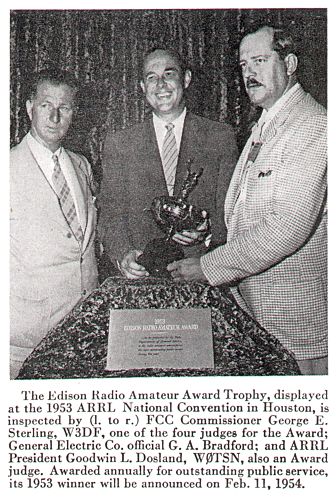 |
|
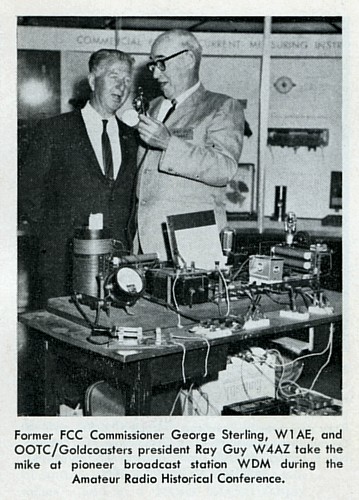
|
George appeared in issues of QST over the years. The photo on the left appeared in the November 1953 QST. The photo on the right appeared in the January 1969 QST. George is on the left in both photos.
George appeared on the cover of the June 1950 issue of CQ magazine and did several guest editorials for the magazine in the early 1950s. The photo above with George in his basement shack at his 40 meter rig appeared on the cover of CQ and an article about him appeared in the same issue.
If you have or know of additional information about George Sterling's history I would greatly appreciate hearing from you. If you would like to read about my radio history, please see the page titled Ham Radio Nostalgia.
I can be reached at [email protected]


